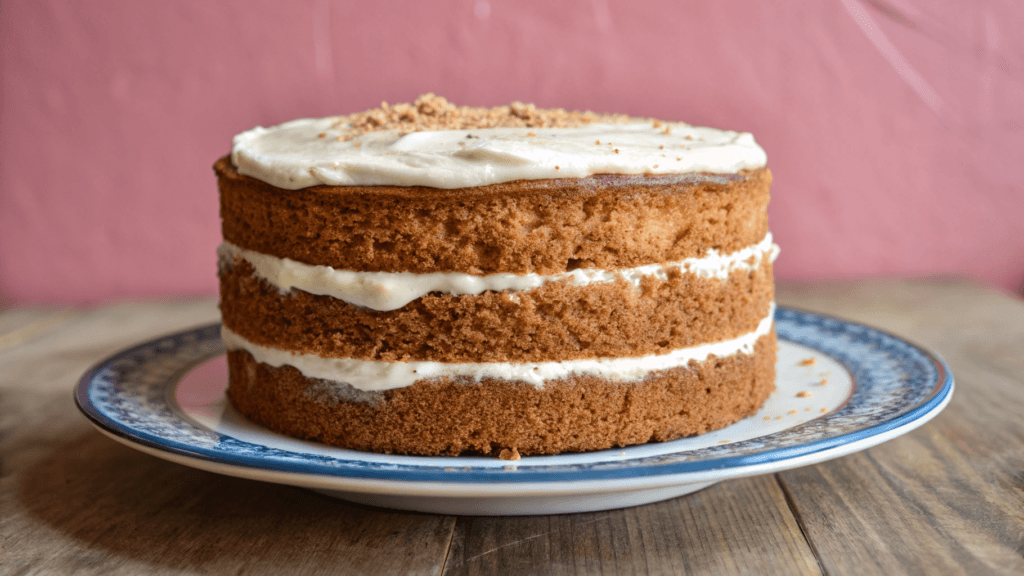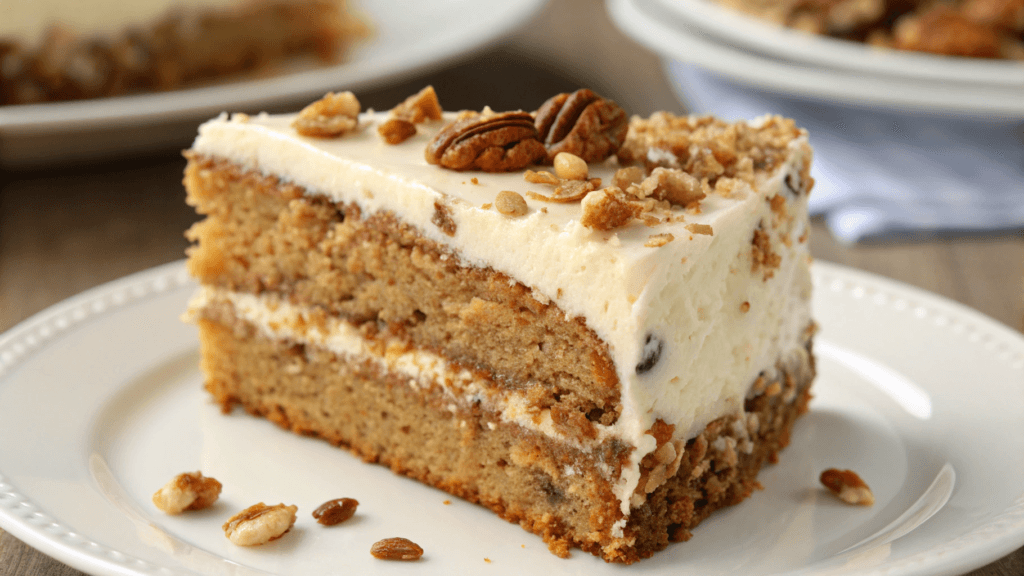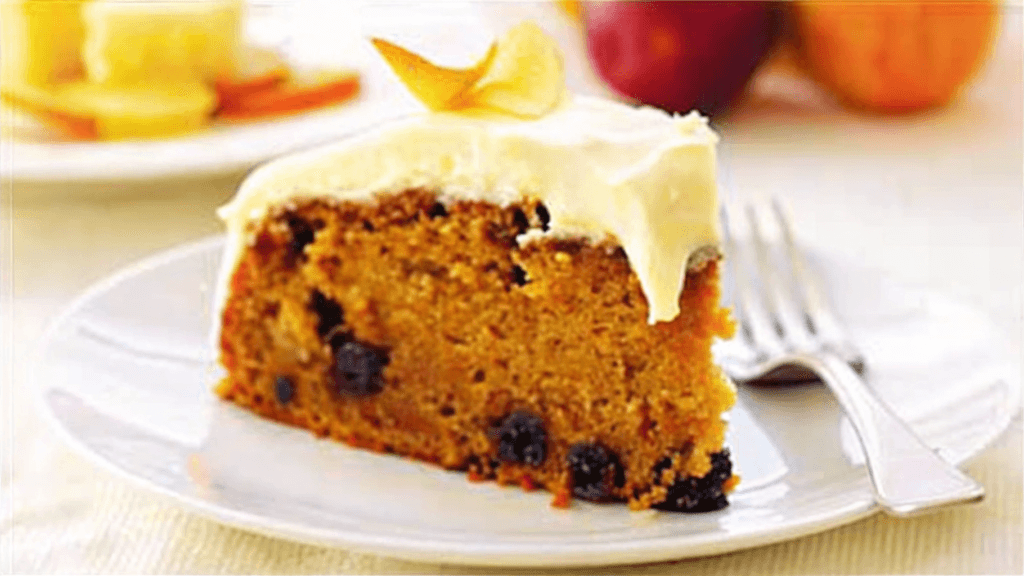Looking to whip up a mouthwatering dessert that doesn’t come with a sugar crash? You’re in the right place! This article walks you through everything you need to know to make the perfect sugar free carrot cake recipe—from picking the right ingredients to mastering the frosting. Whether you’re baking for health reasons or just cutting back on sugar, we’ve got your back with foolproof tips, natural sweeteners, fun variations, and answers to common baking questions.
Understanding the Benefits of Reducing Sugar
Cutting sugar doesn’t mean cutting flavor—not even close! Swapping out refined sugar for natural sweeteners like dates, applesauce, or ripe bananas can actually boost the taste while keeping things wholesome. Reducing added sugar in your diet helps support balanced energy, better moods, and even clearer skin. And for folks managing diabetes or watching their carb intake, it’s a total game-changer.
Plus, once you get the hang of it, sugar-free baking isn’t tricky—it’s just different. You learn how to work with ingredients that have depth, like cinnamon or nutmeg, to bring your bakes to life.
The Rise of Sugar-Free Desserts
In recent years, more people have been reaching for desserts without added sugar. Why? Well, awareness around healthy eating is growing, and we’re all looking for treats that don’t derail our goals. From low-carb cakes to diabetic-friendly desserts, there’s a sweet little revolution happening in kitchens everywhere.
And guess what’s leading the charge? The humble carrot cake. With its moist texture, bold spices, and naturally sweet flavor, it’s the ideal candidate for a sugar-free makeover. Ready to find out why this sugar free carrot cake recipe is one of the best guilt-free bakes around? Keep going—we’re just getting started.

The Allure of Carrot Cake
A Brief History of Carrot Cake
Believe it or not, carrot cake’s roots go way back—like, medieval Europe kind of back. Back then, sugar was a luxury, so people used naturally sweet ingredients like carrots to sweeten their desserts. That’s right, our favorite veggie-packed cake was born out of necessity, not just creativity.
Over time, the recipe evolved. By the 1960s and ’70s, carrot cake had made its way into American kitchens and hearts. Thanks to its moist crumb, warm spices, and creamy frosting, it became a bakery staple. And today? It’s the perfect starting point for anyone chasing a sugar free carrot cake recipe that doesn’t skimp on flavor.
Why Carrot Cake Is a Beloved Dessert
Let’s be honest—carrot cake isn’t just cake. It’s comfort in a slice. The mix of earthy carrots, crunchy nuts, and cozy spices like cinnamon and nutmeg creates a one-of-a-kind taste that’s hard to beat.
What makes it even better? It’s naturally sweet. That means it’s easier to adapt into a sugar-free dessert without losing that signature flavor. Add in the creamy frosting and rich texture, and it’s no surprise this cake has stood the test of time. It’s a sweet treat that feels just right, even without added sugar.
Key Ingredients in a Sugar-Free Carrot Cake
Natural Sweeteners: Dates, Bananas, and Applesauce
So, how do you sweeten a cake without using sugar? Easy—you go natural. Ingredients like dates, overripe bananas, and unsweetened applesauce add both sweetness and moisture. They’re not just healthy swaps—they’re flavor powerhouses. Plus, they blend right into the batter without needing any fancy prep.
Dates are rich and sticky, bringing a caramel-like taste. Bananas? They add a mellow, fruity vibe. Applesauce, on the other hand, is subtle, making it perfect for balancing the spices in your sugar free carrot cake recipe.
Flour Alternatives: Almond and Coconut Flours
When it comes to flour, you’ve got options—especially if you’re keeping things gluten-free or low-carb. Almond flour gives your cake a tender crumb and mild nutty flavor, while coconut flour absorbs moisture and adds a bit of natural sweetness.
These flours are higher in fiber and protein than traditional all-purpose flour, which means your cake won’t just taste good—it’ll do your body good, too. Bonus: they help make your bake more diabetic-friendly.
Binding Agents: Eggs and Plant-Based Substitutes
Eggs keep everything together, giving your cake structure. But if you’re going egg-free, don’t worry—flax eggs or chia seeds mixed with water can step in. They act as natural binders while adding healthy fats and nutrients.
No matter what you choose, the goal’s the same: a moist, fluffy cake that holds its shape.
Flavor Enhancers: Spices and Extracts
Spices are the soul of any carrot cake. Think cinnamon, nutmeg, and even a pinch of clove. They create that warm, comforting taste we all love. A splash of vanilla extract also works wonders, especially when your cake doesn’t have sugar to fall back on.
Together, these ingredients make your sugar free carrot cake recipe sing—with flavor in every single bite.

Step-by-Step Sugar-Free Carrot Cake Recipe
Preparing the Ingredients
Before you even think about preheating the oven, let’s talk prep. Start by gathering your ingredients—make sure everything’s at room temperature for best results. Grate your carrots fresh; don’t use the pre-shredded kind, as they’re often too dry. If you’re using dates, soak them in warm water for about 10 minutes to soften them up. For bananas, the browner, the better!
Make sure your flour, whether almond or coconut, is sifted and lump-free. This helps the batter mix evenly. And don’t forget the spices—measuring them out ahead saves time and keeps your baking flow smooth.
Mixing the Batter
In one bowl, mash your bananas (or blend dates/applesauce) with the eggs or egg substitute. Add vanilla extract and a dash of oil—coconut oil works wonders here. In another bowl, whisk your dry ingredients: flour, baking soda, baking powder, cinnamon, nutmeg, and a pinch of salt.
Now, slowly mix the wet and dry together. Fold in the grated carrots, and if you’d like, add chopped walnuts or raisins for texture. Don’t overmix—just stir until everything’s combined.
Here’s where the magic happens. This batter will look a little thicker than what you’re used to—but don’t worry, it bakes up beautifully.
Baking the Cake
Preheat your oven to 350°F (175°C). Pour the batter into a greased 8-inch round or square cake pan. Bake for 30–35 minutes, or until a toothpick poked in the center comes out clean.
Let the cake rest in the pan for about 10 minutes before transferring it to a wire rack. This helps it firm up and prevents breakage.
Cooling and Frosting
Patience pays off here—don’t rush the cooling! Once your cake is completely cool, frost it with your favorite sugar-free topping. A cream cheese frosting with honey or maple syrup substitute is a great choice.
This sugar free carrot cake recipe is moist, rich, and bursting with natural sweetness. It’s perfect for birthdays, holidays, or those days when you just need a slice of something special.
For more delicious recipes, check out our recipe article on healthy baking ideas—perfect for sweet tooths with a smart twist!
Frosting Options Without Added Sugar
Cream Cheese Frosting with Natural Sweeteners
Let’s face it—what’s carrot cake without that dreamy frosting? The good news? You can whip up a creamy, flavorful topping without a single grain of refined sugar. Start with plain cream cheese (preferably full-fat for extra richness) and blend it with a natural sweetener like monk fruit syrup, stevia, or a touch of pureed dates.
Want to get fancy? Add a splash of vanilla and a bit of lemon zest to balance the sweetness with a little zing. This frosting pairs perfectly with the dense, spiced cake underneath.
The result? A smooth, spreadable topping that tastes just like the classic—without the sugar spike.
Vegan Alternatives: Cashew and Coconut-Based Frostings
If you’re skipping dairy, you’re still in luck. A cashew cream frosting is a delicious vegan option. Just soak raw cashews in water for a few hours, then blend them with a bit of coconut milk, vanilla, and your sweetener of choice. The texture is silky and satisfying.
Another winner? Coconut whipped cream. Chill a can of full-fat coconut milk overnight, scoop out the solid part, and whip it up with some vanilla and a natural sweetener. It’s light, fluffy, and just sweet enough.
Tips for Achieving the Perfect Consistency
No matter what frosting you go with, consistency is key. If your mix is too thick, add a few drops of milk (dairy or plant-based). Too thin? Chill it or add a bit more cream cheese or cashew paste.
Your goal? A frosting that’s easy to spread but firm enough to hold up—especially if you’re layering. With a little tweaking, your sugar free carrot cake recipe will look just as amazing as it tastes.
Variations and Add-Ins
Incorporating Nuts and Dried Fruits
Want to give your sugar free carrot cake recipe a bit more texture and flavor? Try tossing in some chopped walnuts, pecans, or even pistachios. Nuts bring a lovely crunch and add healthy fats that help make your dessert more satisfying.
For a naturally sweet boost, add unsweetened raisins, chopped dates, or dried pineapple. Just remember to keep it balanced—too much fruit can make the cake overly moist. Mixing them in at the end keeps them evenly spread throughout the batter.
Adding Pineapple or Coconut for Extra Moisture
If you like your carrot cake extra moist (who doesn’t?), try folding in a bit of crushed pineapple. It adds natural sweetness and a subtle tropical flavor that pairs beautifully with the warm spices.
Coconut flakes—especially the unsweetened kind—add a chewy bite and complement the carrots nicely. They’re also great if you’re aiming for a more exotic twist.
Want more ideas? You could even mix in a touch of orange zest or a sprinkle of chia seeds for added fiber. With a little experimenting, your sugar free carrot cake recipe becomes completely your own.

Serving and Presentation Tips
Decorating Your Carrot Cake
You’ve baked the cake, whipped up the frosting—now it’s time to make it look amazing. If you’re keeping it simple, a thick layer of frosting with a sprinkle of chopped nuts or shredded coconut on top does the trick.
Want to get fancy? Use a piping bag for neat swirls or add carrot ribbons on top for a rustic touch. A dusting of cinnamon or a few edible flowers can also add charm without much effort.
Even a minimalist look can wow your guests if the cake is sliced clean and served with care.
Pairing Suggestions: Beverages and Sides
Pair your carrot cake with a hot drink to balance the sweetness. Chai tea, black coffee, or almond milk lattes all work well. If it’s a summer day, go with iced tea or a chilled oat milk latte.
Planning a brunch or party? Serve small squares of your sugar free carrot cake recipe alongside a fruit salad or yogurt cups. It adds color and freshness to the table while keeping things light and healthy.
Storing and Preserving Freshness
If you’ve got leftovers, lucky you! Store the cake in an airtight container in the fridge—it’ll stay fresh for up to 5 days. Want to freeze it? Wrap individual slices and stash them in the freezer for easy treats down the road.
Frequently Asked Questions
Can I Make This Cake Without Nuts?
Absolutely! If you’re allergic to nuts or just not a fan, you can skip them entirely. Your sugar free carrot cake recipe will still be moist, flavorful, and perfectly spiced. If you’re looking for a bit of texture, try swapping in sunflower seeds or shredded coconut instead.
Just keep in mind—some frostings may use nuts like cashews in vegan versions, so always double-check if you’re baking for someone with allergies.
How Do I Ensure the Cake Is Moist?
The key to a moist carrot cake? Don’t overbake, and use natural moisture boosters. Ingredients like applesauce, crushed pineapple, or ripe bananas do wonders. Also, be careful not to pack the flour when measuring—it can dry things out fast.
Let the cake rest after baking so it sets properly. And remember, carrots add natural moisture too, so grate them fresh right before baking for the best results.
What Are the Best Egg Substitutes for This Recipe?
There are several great options for replacing eggs in a sugar free carrot cake recipe. Flax eggs (1 tbsp ground flaxseed + 3 tbsp water) are a favorite. Chia seeds work the same way. Unsweetened applesauce also makes a great egg replacer while adding a touch of sweetness.
Each substitute has a slightly different texture, but all of them help bind the cake beautifully.
Related Keywords and Topics
To help your sugar free carrot cake recipe reach the right audience and boost its discoverability, here’s a handy list of related LSI (Latent Semantic Indexing) and NLP (Natural Language Processing) keywords. These terms are commonly searched along with or related to our main keyword, and they’re great to sprinkle into your content naturally.
LSI and NLP Keywords:
- Healthy carrot cake recipe
- No sugar added desserts
- Low sugar carrot cake
- Diabetic-friendly carrot cake
- Almond flour carrot cake
- Natural sweeteners for baking
- Applesauce carrot cake
- Low-carb cake recipes
- Carrot cake without refined sugar
- Banana-sweetened carrot cake
- Coconut flour carrot cake
- Moist sugar free cake
- Gluten-free sugar-free desserts
- Homemade sugarless carrot cake
- Sugar substitute for baking
Using a mix of these keywords throughout your content helps keep things relevant and reader-friendly without sounding forced. Just weave them in where they naturally fit—and your recipe will shine both on the page and in search results!
Print
The Ultimate Guide to Crafting a Delicious Sugar-Free Carrot Cake
- Prep Time: 20 minutes
- Cook Time: 25 minutes
- Total Time: 50 minutes
Ingredients
Dry Ingredients:
1 ½ cups almond flour
½ cup coconut flour
1 tsp baking soda
1 tsp baking powder
1 ½ tsp ground cinnamon
¼ tsp ground nutmeg
¼ tsp salt
Wet Ingredients:
3 large eggs (or 3 flax eggs for vegan option)
½ cup unsweetened applesauce
¼ cup coconut oil, melted
1 tsp vanilla extract
¾ cup mashed ripe bananas (or blended soft dates)
Add-Ins:
1 ½ cups freshly grated carrots (about 3 medium carrots)
½ cup chopped walnuts or pecans (optional)
⅓ cup raisins or chopped dates (optional)
¼ cup unsweetened shredded coconut (optional)
Optional Frosting (Cream Cheese Style):
8 oz plain cream cheese (or cashew cream for vegan)
2–3 tbsp monk fruit sweetener or pureed dates
1 tsp vanilla extract
1 tbsp lemon juice (for tang)
Instructions
1. Prep Your Tools & Ingredients
Preheat your oven to 350°F (175°C).
Grease an 8-inch round or square cake pan with oil or line it with parchment paper.
Grate your carrots and mash your bananas (or blend your soaked dates) if using.
2. Mix the Dry Ingredients
In a large bowl, whisk together:
Almond flour
Coconut flour
Baking soda & baking powder
Cinnamon, nutmeg, and salt
Set this aside—you’ll come back to it soon!
3. Combine the Wet Ingredients
In a separate bowl, mix until smooth:
Eggs (or flax eggs)
Unsweetened applesauce
Melted coconut oil
Vanilla extract
Mashed bananas (or date paste)
4. Make the Batter
Gradually pour the wet mixture into the dry ingredients.
Stir gently until just combined—don’t overmix.
Fold in the grated carrots and any add-ins (nuts, raisins, coconut).
5. Bake It
Pour the batter into your prepared pan and spread it evenly.
Bake for 30–35 minutes, or until a toothpick inserted in the center comes out clean.
Let the cake cool in the pan for 10 minutes, then transfer to a wire rack to cool completely.
6. Frost and Decorate (Optional)
Once the cake is fully cool, frost with sugar-free cream cheese frosting or vegan cashew frosting.
Decorate with extra nuts, shredded coconut, or a dusting of cinnamon for flair.
✅ Pro Tips:
Chill frosting before spreading for a firmer texture.
Store leftovers in an airtight container in the fridge for up to 5 days.
Freeze slices for up to 2 months—just thaw and enjoy!
Nutrition
- Serving Size: 1 slice (1/12 of the cake)
- Calories: 210 kcal
- Sugar: 5g (from natural sources like carrots, bananas, raisins)
- Sodium: 160mg
- Fat: 13g
- Saturated Fat: 4g
- Unsaturated Fat: 8g
- Carbohydrates: 20g
- Fiber: 4g
- Protein: 5g
- Cholesterol: 45mg (from eggs; may vary if using plant-based substitutes)


1 thought on “The Ultimate Guide to Crafting a Delicious Sugar-Free Carrot Cake”